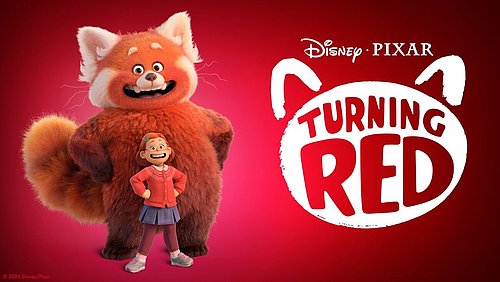
Engaging the Next Generation: How Roblox is Transforming Youth Sports Fandom
The Future of Young Sports Fans
By
Nathalie Heesom-Green

The Super Bowl is a world-class event that millions of spectators show up or tune in to every year, worth billions of dollars in hospitality, athleticism and ad revenue. With the 2025 broadcast of Super Bowl LIX breaking a number of records for the event’s history, there is no doubt it is the buzz of the playground right now. But other than the initial excitement, is the Super Bowl an effective draw to long-term sports engagements from young fans?
The Super Bowl is due a closer examination for the purposes of engaging kids as long-term sports fans, opening discussions for lower barrier-to-entry avenues marketers could otherwise start young fans on their journey to hardcore supporters.
As a national event, the Super Bowl has greater effects than on its immediate audiences: LIX saw record-breaking ad sales, with Fox reporting over $800 million in gross advertising revenue, the cost for a 30-second commercial spot reaching up to $8 million. The economic benefit of the Super Bowl was also felt in the local area: hosting the event injected an estimated $500 million into the New Orleans economy, driven by spending in restaurants, hotels and transportation to facilitate the approximately 125,000 visitors.
Attending the Super Bowl is not for everyone, however. Basic expenses for attendance, including tickets, travel and accommodation, can exceed several thousand dollars, with many spaces reserved for the rich and famous: some guests included Taylor Swift, President Donald Trump and other renowned celebrities such as Lady Gaga and Paul Rudd. It’s no surprise to see such a high profile Rolodex of attendees, seeing as the average ticket resale price was well beyond the amateur spender, at $11,067.
The average American audience was made up of the broadcast viewer, able to access the game by tuning in to Fox for the 18:30 (EST) kick off on the 9th of February. A record-breaking number of viewers did exactly that, as the game attracted an average of 127.7 million viewers, with a peak of 137.7 million during the second quarter. Kendrick Lamar’s halftime show drew an average of 133.5 million viewers, surpassing previous records for Super Bowl halftime shows.
The Super Bowl was an exception in the shifting approach of broadcasters’ strategy regarding live sport: viewers could watch the game live on Fox’s free-to-consume streaming service Tubi, incurring no cost at the point of consumption for audiences. For football fans, navigating the increasingly complicated ecosystem of streaming live sport can be an expensive and overwhelming pastime to manage. By our calculations, the cost of watching every NFL game next season can be as much as $855.86, including treating yourself to a Sunday Ticket as well as your monthly subscriptions to multiple streaming services.
Therefore, while the Super Bowl hypes up so much attention across the nation, those invested in its outcome are probably already established football fans. Attracting the eyeballs of the next generation of fans is easily achieved by the great extravagance of the event and the free cost of engagement on broadcasting services, but what happens next? How do you maintain the long-term interest of young fans when they cannot follow their favourite team across the next season due to the cost? Well, that just means it’s time to diversify your approach to kids marketing.
We know from previous research conducted for the Global Kids Sports Report that kids enter into sports fandom through three predominant channels: family, friends and community. If a child’s family is not interested in sports, they cannot facilitate their entry into fandom. Thus, the child is likely to turn to their friends or to their surrounding community for emotional engagement with their fandom.
Engagement is increasingly shifting to the online sphere, where kids will meet both their IRL and online friends to socialise during their free time in the form of messaging, video calling or gaming. The rising superstar of these socialising platforms which facilitate tweens and young teenagers' emotional engagement, and increasingly high visitation, is Roblox.
No surprise to anyone, Roblox is a widely popular platform among children: under 13-year-olds make up over 34 million daily active users, while about 22% of the platform’s user base fall under 9-years-old. Daily active users spend an average of 144 minutes per day on the platform, the most popular games falling under RPGs, adventure and fighting, and team-based combat genres.
Reflecting the real world, the virtual reality simulated in Roblox is increasingly utilised in marketing campaigns with strategies to address young people where they organically socialise: a poster you may pass on the tube is now also plastered on a virtual billboard in Roblox.
Other strategies include; branded virtual experiences such as NIKELAND or Gucci Garden; in-game advertising like product placement of sponsored experiences; limited-edition virtual items which users may purchase with Robux; influencer or developer collaborations which drive traffic from streamers to the platform; and many more.
Roblox marketing has even adapted to marketing sports teams. Blue Moon, the Manchester City FC official Roblox experience, was designed to engage fans through interactive gameplay and virtual community building – a reliable strategy to enhance affinity by providing fans with a sense of belonging. The experience has had over 10.7 million visits since its launch in 2022, with more than 28,000 users favouriting the experience.
Utilising our Fandom Journey to understand fans' approach to engagement, Roblox's marketing strategy fosters global fan engagement with immersive experiences that transcend traditional interactions, incorporating what it means to be a fan of Manchester City into the everyday environment of young fans in the ecosystems they already engage with. Shifting up a gear, this platform not only allows kids to engage with the club, but to share it with their friends for greater reach and a sense of belonging, contributing to fan affiliations and identity, thus strengthening their attachment to the brand.
With a low cost of entry and very minimal barriers to engagement, sports-centric Roblox experiences offer young fans multiple touchpoints along the Fandom Journey from Exposure to Identity Development: skill progression, socialisation, social currency and a sense of community – to name a few – are all experiences which contribute to kid’s affinity to fandom, and are provided by Roblox experiences for a couple of hours every single day.
However, how each fandom utilises Roblox in its marketing strategy must be done with an approach unique to its existing brand and current fandom experience. Ensuring that strategies resonate with existing fans and intrigue new audiences requires thorough research and consideration from audience specialists, as well as careful implementation to not alienate or disengage any fan along the Fandom Journey.
Therefore, while the Super Bowl may be the piece de resistance of any hardcore football fan’s year, the average younger viewer requires greater touchpoints within their everyday experience to develop a deep sense of affinity to the brand or sports club over a longer period of time. Cue Roblox entrance here, providing young fans with multiple opportunities to engage and build a relationship with the brand at minimal cost and high reward, paving the way for them to one day get to Super Bowl level.
Image Source: NFL Universe Roblox Game


